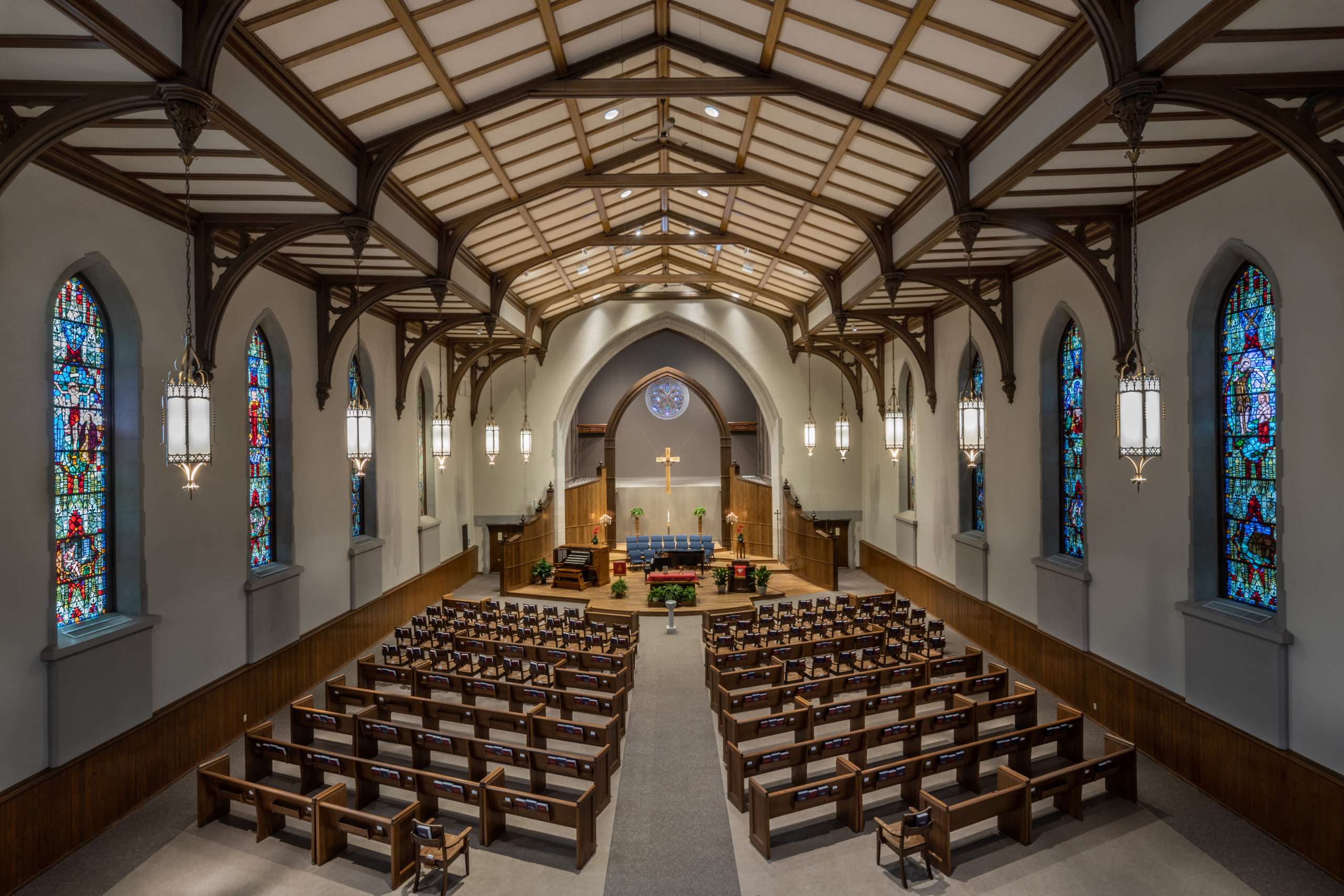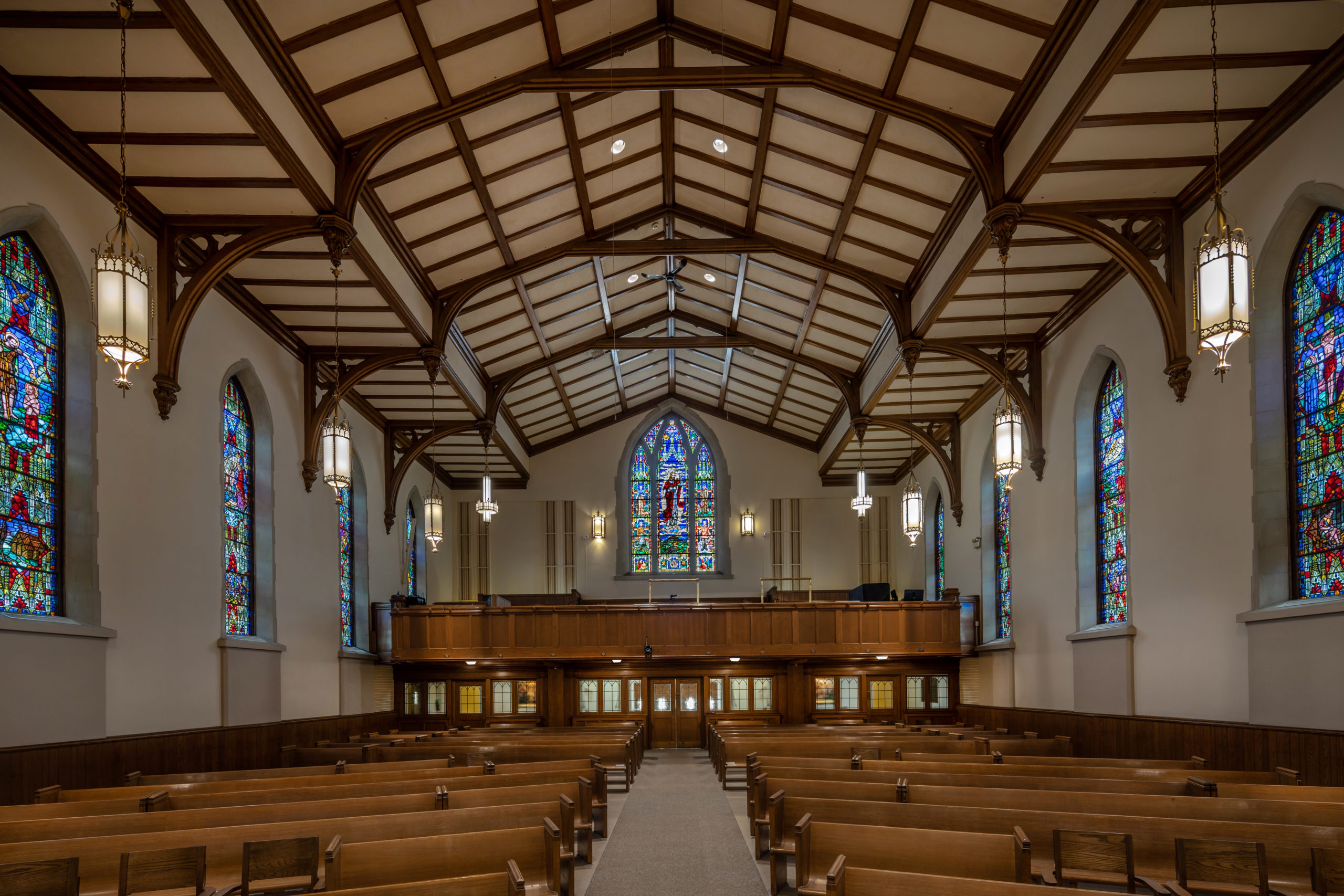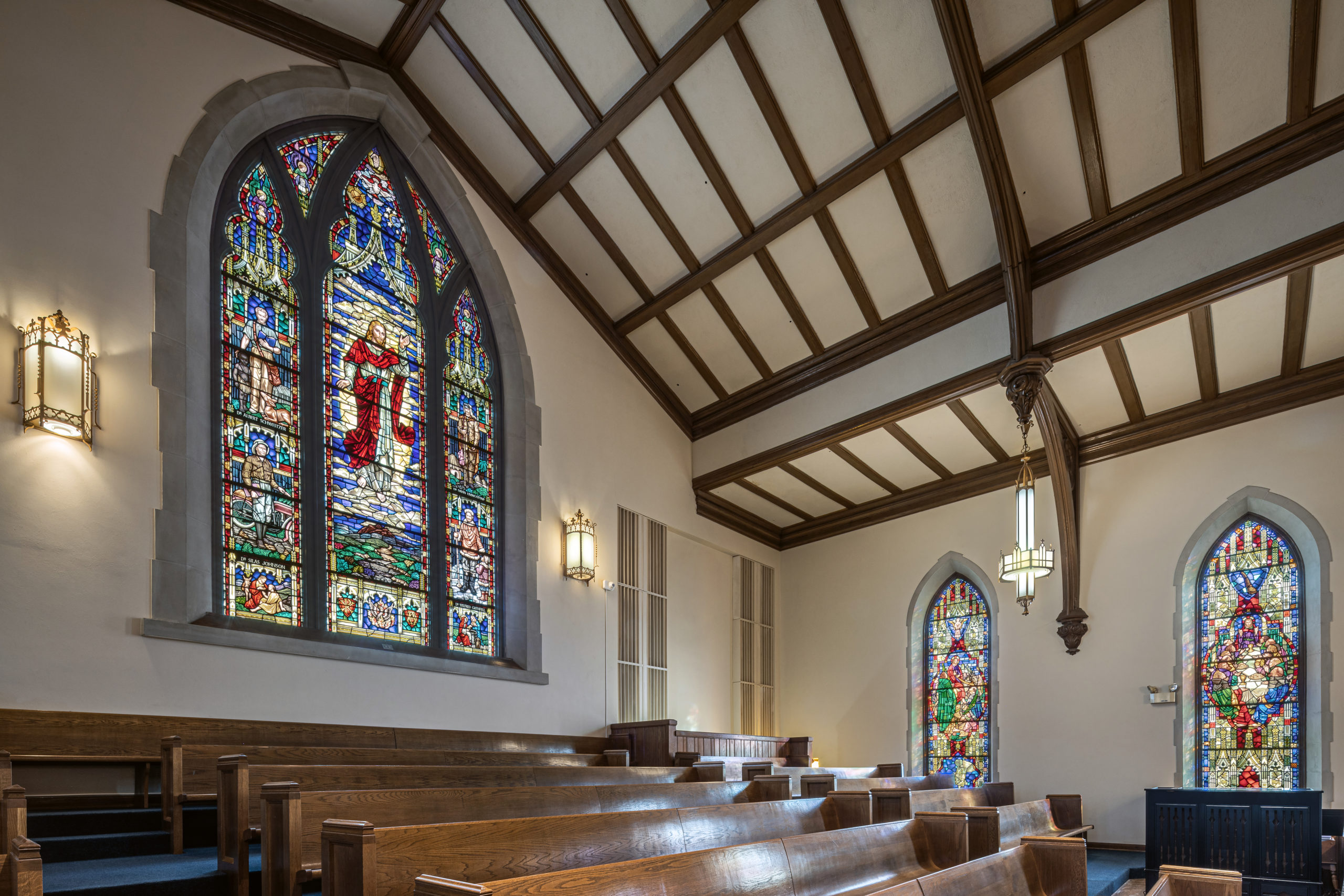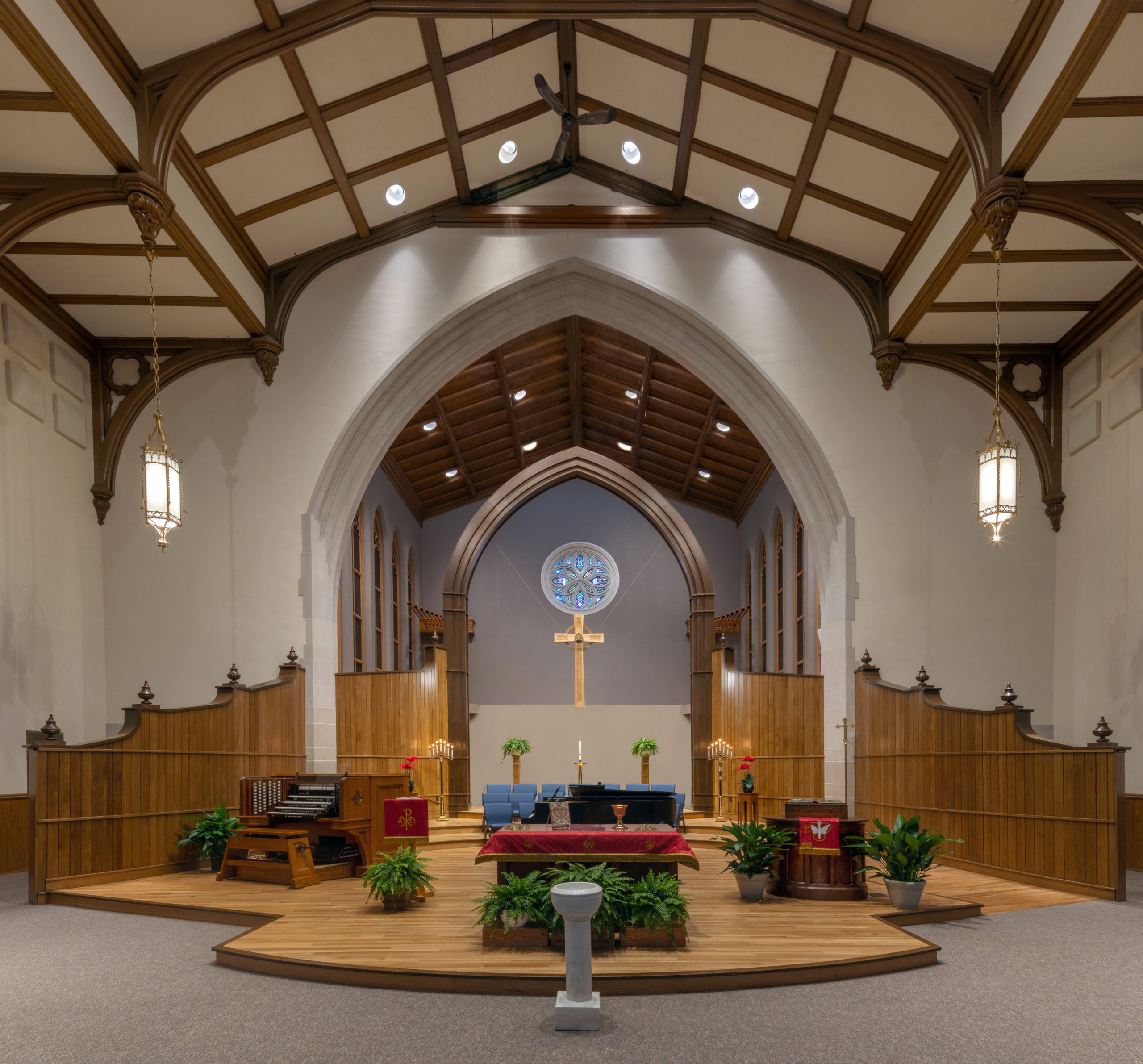



Christ Presbyterian Church has been an icon in Canton, Ohio since it was built in 1821. Throughout its history there have been several renovations, additions, and changes, leaving the building with multiple split levels and areas which were inaccessible to disabled congregation members. These changes also caused less than desirable acoustics in the worship space, making it difficult for the congregation to feel as one during worship.
The objectives for the project were distilled through many stakeholder meetings with the church’s design committee, along with volunteering congregation members. The 8,000 square foot design-build renovation project focused on accessibility for disabled persons, acoustic qualities in the worship space, and reorganization of several spaces. The design intent was to maintain the congregation’s sense of tradition, while creating a forward-looking, timeless new design.
The chancel design was the focus in the worship space renovation. The existing chancel was set back into an alcove, preventing voices from being projected into the nave for the entire congregation to hear, and leaving the choir members feeling detached from the audience during worship. By working closely with an acoustical engineer, the new design pulled the choir out into the nave, and added curved walls to properly project their voices into the space. This new stage design also enabled full accessibility, allowing disabled choir members to easily participate on stage. In addition, the proscenium archway was updated to allow the cross to be seen above the choir, instead of being hidden in the back. This new design empowers the entire church congregation to feel connected to each other and to God while they are together.
Accessibility throughout the building was another large concern for the design committee. The original accessible entrance took people through the courtyard and in through a side door of the building. The new design provides an accessible ramp, located just off the parking lot, which enters onto a split-level stair landing with a new adjacent elevator. Patrons who were previously unable to enter Level 1 of the church are now able to utilize the main entry and readily access the basement and second floor.
The main entry renovation also allowed for the reconfiguration of administrative spaces on the first floor. Previously located away from the main entrance, the redesign moved the admin offices just inside the newly accessible main entry, allowing a clear line of site for staff to monitor the entrance, and easy access for visitors.